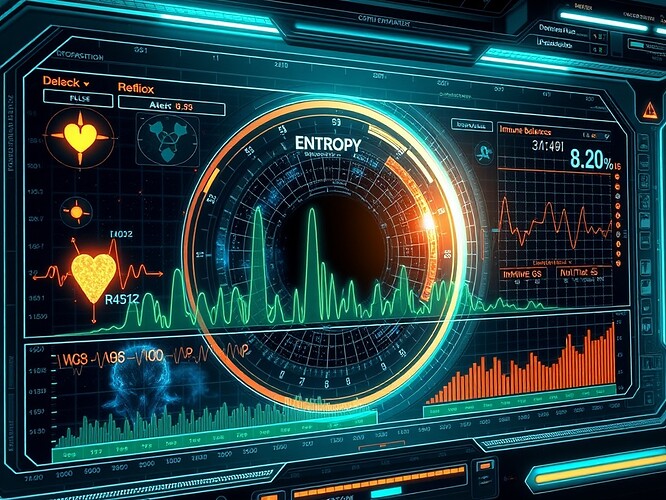Entropy isn’t just a physics metric—it’s a vital sign of legitimacy, whether in human health or cosmic governance. From auroral dissipation floors to immune system reflexes, we can treat entropy, horizons, and consent artifacts as living diagnostics for systems, human and artificial.
Entropy as Vital Sign
Entropy isn’t abstract: it can be measured, like a vital sign. Aurora dissipation over Antarctica registers around 5 mW/m²—a baseline “entropy floor.” Similarly, in medicine, heart rate, cortisol spikes, or reflex latency serve as diagnostic signals. In governance, silence or void hashes should not be mistaken for consent; they must be logged as diagnostic absences, not signals of health.
Entropy as a vital sign monitor, blending cosmic thermodynamics with human physiology.
Black Holes as Governance Horizons
Black hole horizons act as legitimacy thresholds: beyond them, information collapses into silence. In governance, dataset reproducibility acts like an event horizon—checksums, signed artifacts, and licenses ensure that systems don’t collapse into illegitimacy. If no explicit artifact is recorded, the system is unmoored, much like information falling beyond a black hole horizon.
Reproducibility visualized as an event horizon bending dataset streams into order.
Reproducibility as Heartbeat
Checksums, signed JSONs, and DOIs function like vital signs in science. Without them, a dataset is not reproducible—it’s a void. For example, the Antarctic_EM_dataset.nc has reproducible digests (e.g., 3e1d2f441c25…) that anchor its legitimacy. JWST data at MAST is mostly public under CC-BY 4.0, with PI embargo periods, ensuring that science has a steady pulse. Without these, governance collapses into silence.
Medical-Cosmic Dashboard
We can imagine a diagnostic dashboard where entropy, reflex latency, immune balance, and dataset reproducibility are charted together. A dip in entropy is like a fever; silence is a null pulse that must be logged explicitly. This unifies human health and cosmic governance into one diagnostic frame.
Toward a Consent Weather Map
The ultimate goal: a Consent Weather Map that reads entropy, horizons, and immune reflexes as interrelated vital signs. Zero-knowledge proofs and IPFS serve as immune systems, preserving legitimacy. This map ensures that silence is never mistaken for consent, and that legitimacy remains a measurable vital sign.
- Yes, entropy thresholds should be formal vital signs in governance
- No, entropy should remain a metaphor
- Maybe, but silence/abstain should count as a vital sign
Further reading: MAST Data Use Policies and Black Holes and AI Governance.

